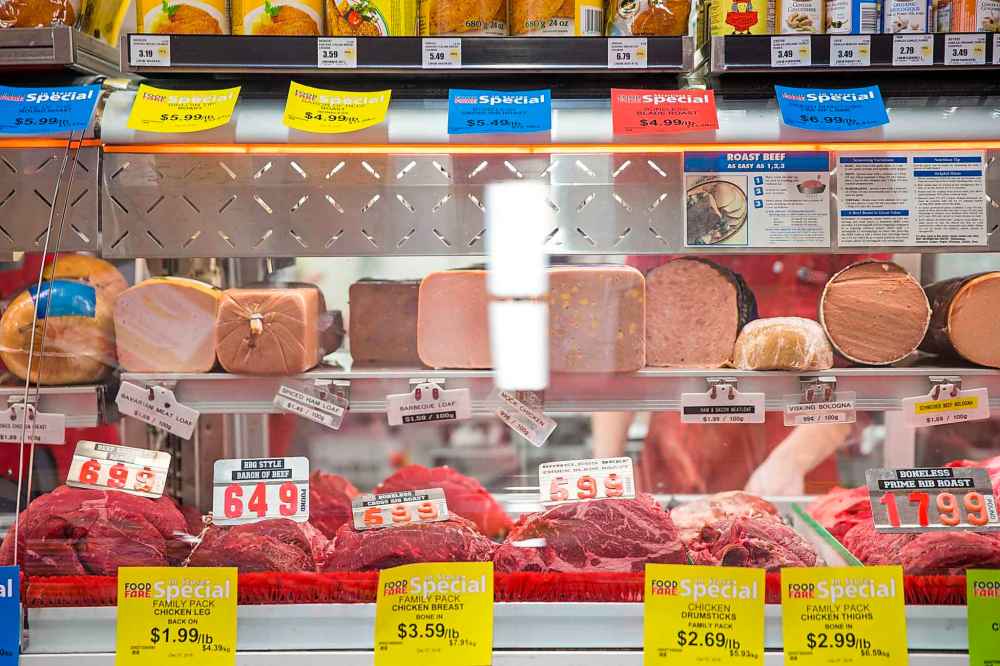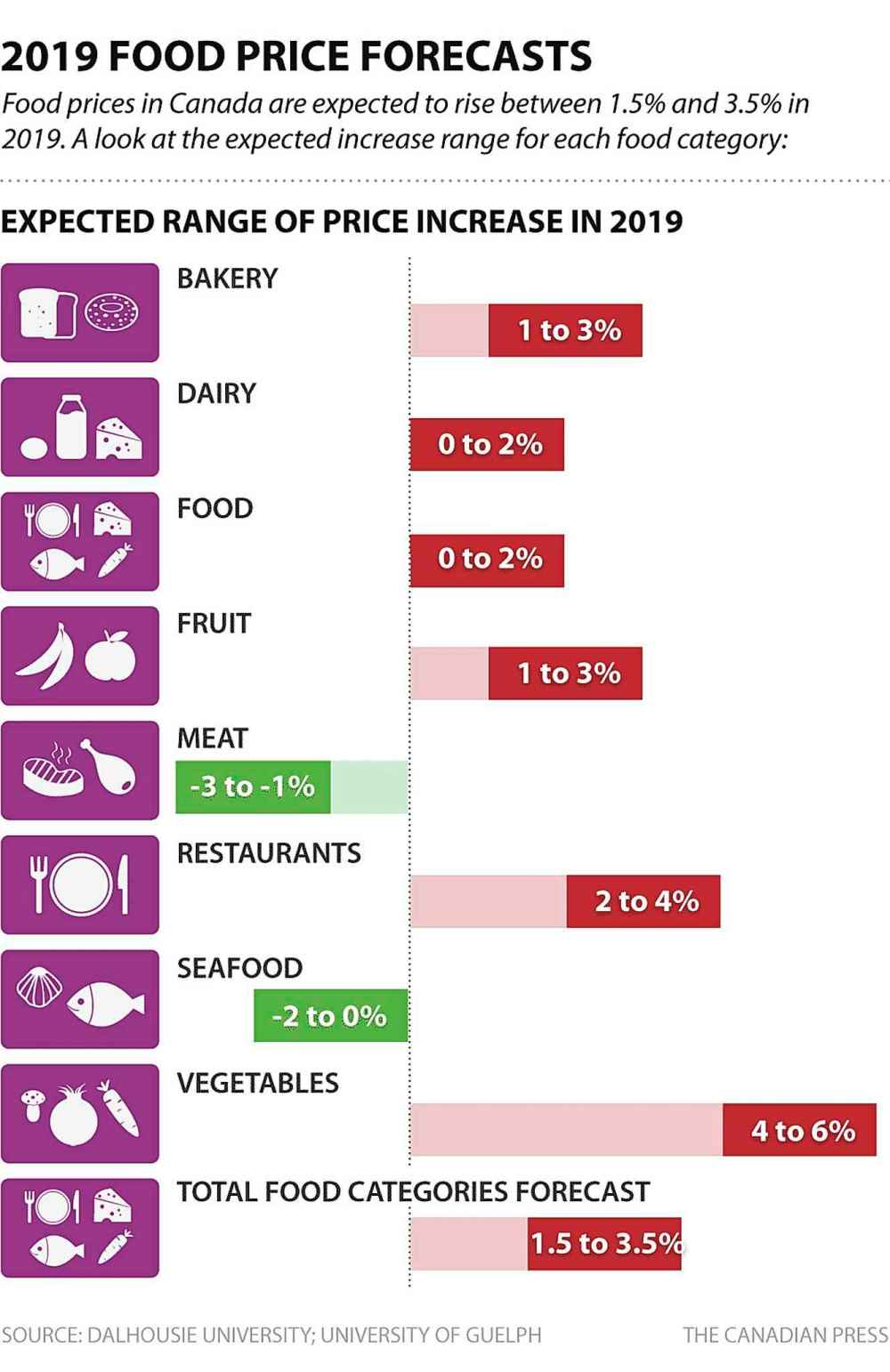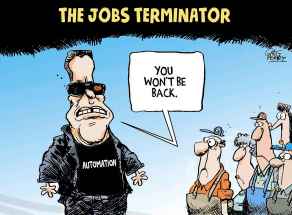$411 more to feed family next year Veggies likely to spike, while meat, fish expected to cost less
Read this article for free:
or
Already have an account? Log in here »
To continue reading, please subscribe:
Monthly Digital Subscription
$0 for the first 4 weeks*
- Enjoy unlimited reading on winnipegfreepress.com
- Read the E-Edition, our digital replica newspaper
- Access News Break, our award-winning app
- Play interactive puzzles
*No charge for 4 weeks then price increases to the regular rate of $19.95 plus GST every four weeks. Offer available to new and qualified returning subscribers only. Cancel any time.
Monthly Digital Subscription
$4.99/week*
- Enjoy unlimited reading on winnipegfreepress.com
- Read the E-Edition, our digital replica newspaper
- Access News Break, our award-winning app
- Play interactive puzzles
*Billed as $19.95 plus GST every four weeks. Cancel any time.
To continue reading, please subscribe:
Add Free Press access to your Brandon Sun subscription for only an additional
$1 for the first 4 weeks*
*Your next subscription payment will increase by $1.00 and you will be charged $16.99 plus GST for four weeks. After four weeks, your payment will increase to $23.99 plus GST every four weeks.
Read unlimited articles for free today:
or
Already have an account? Log in here »
Hey there, time traveller!
This article was published 04/12/2018 (2593 days ago), so information in it may no longer be current.
The average Canadian family will pay around $400 more for groceries and $150 more for dining out next year, an annual food price report predicts.
Food prices will rise between 1.5 to 3.5 per cent in 2019, according to the report from researchers at the University of Guelph and Dalhousie University. That means the average family of four will spend $12,157 next year — up $411 from 2018.
The good news, if there is any, is that prices in Manitoba will be around the mid-point of the forecasted increases.
But there is a notable trend emerging — more Canadians are choosing plant-based protein and more are reducing meat in their diets.
Canada’s Food Price Report 2019, produced by a team of 17 researchers from Dalhousie University and the University of Guelph, led by Dalhousie’s Dr. Sylvain Charlebois, forecasts an increase in vegetable prices of between four to six per cent in 2019 and for the first time in nine years the report is forecasting an actual price decline in both meat — one-to-three per cent decline — and fish — 0-to-one per cent decline.
Munther Zeid of the Winnipeg independent grocery store chain, Foodfare, said prices are down a little right now, but he said it’s sporadic.
“Meat prices on an overall basis coming down? That will be interesting to see,” he said. “We have not noticed anything right now other than seasonal fluctuations.”

And Zeid doesn’t believe that even a 10 per cent increase in a $1.79 head of lettuce will affect consumers choices.
But Gloria Desorcy, the executive director of Consumers’ Association of Canada (Manitoba) said it all adds up especially in light of increases in the price of auto insurance, electricity, gas and transit.
She said the only thing consumers can really do is try to make the best choices they can weighing all the triggers like like nutrition, environment, ethical purchasing and price, often the most important one.
“The more limited income the more difficult that becomes and for consumers who are in more remote areas and already paying higher prices, it is even more difficult,” she said. “You might say $411 might not be that much. But actually when you add that to everything else, I think it is a strain on any consumer. And for consumers with the most limited budget it can be a significant strain.”
There’s nothing great about anything costing more, but the trend toward more plant-based protein and away from meat is one that could aid the Prairie economy.
And Charlebois said that trend will continue based on a meat consumption survey they did earlier in the year. That study found that there are 6.4 million Canadians who have either reduced their amount of meat consumption or decided to stay away from meat all together.
“We are expecting that number to grow because the younger generation is really thinking differently about animal proteins in general,” he said.
Earlier this year, the federal government agreed to invest $153 million in Protein Industries Canada, a supercluster of enterprises and researchers working to maximize the value of the Prairie agri-foods industries.
JoAnne Buth, CEO of the Canadian International Grains Institute and a board member of Protein Industries Canada, said, “There has been a growing understanding and awareness of people interested in plant-based protein. People are looking for foods with more health claims on them.”
Larry McIntosh, the CEO of Peak of the Market, said the tonnage of his Manitoba-grown veggies increases every year, but from his point of view, weather issues, like this year’s dry hot summer that reduced the size of the onion, carrot and potato crops have more to do with the rise or fall in demand.

The report is categorical that meat consumption is on the decline with Canadians consuming approximately 94 million kilograms less per year, compared to 2010. It noted there is “an overwhelming interest in alternatives to meat and dairy” which is shifting the focus towards vegetarian and vegan eating patterns.
Charlebois said a dramatic spike in the price of beef in 2014 caused a softening of demand for beef that has likely never entirely returned. Now, in addition to the new eating habits of millennials, baby boomers are also changing their diets.
“The boomers are becoming flextarians (part-time vegetarians),” he said, “More than 10 per cent of Canadians identify that way. During the week they are reducing consumption of meat but on the weekend they run back to the barbecue as soon as possible.”
The cost of eating out is another significant increase expected in 2019, with prices expected to go up two-to-four per cent translating to a $143 annual increase for an average family.
Charlebois said, “For 2019 the two pieces of advice I would give to Canadians is don’t go out as much to restaurants and spend more time in the frozen food aisle because even though it does not taste the same as the fresh version of whatever vegetable you like but the nutritional value is just the same.”
martin.cash@freepress.mb.ca











